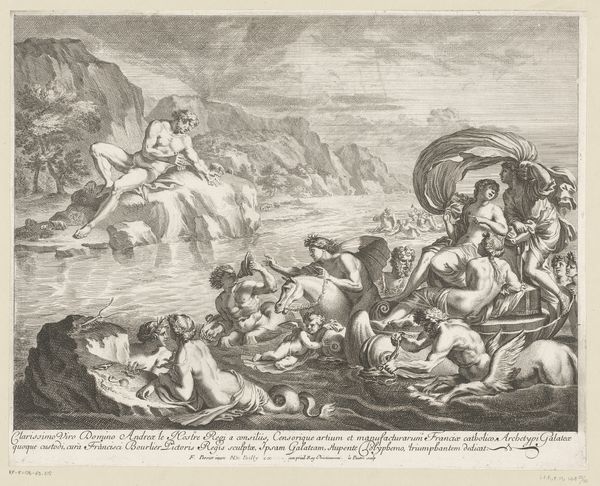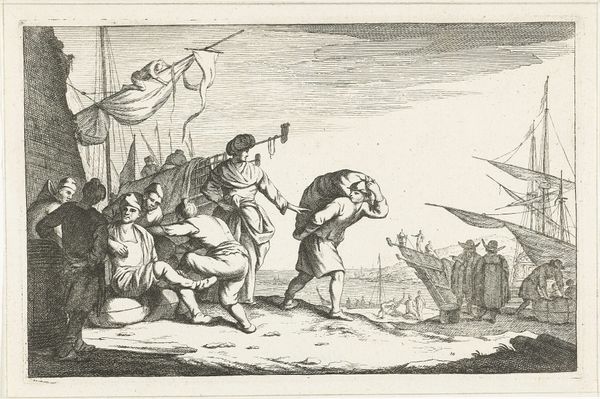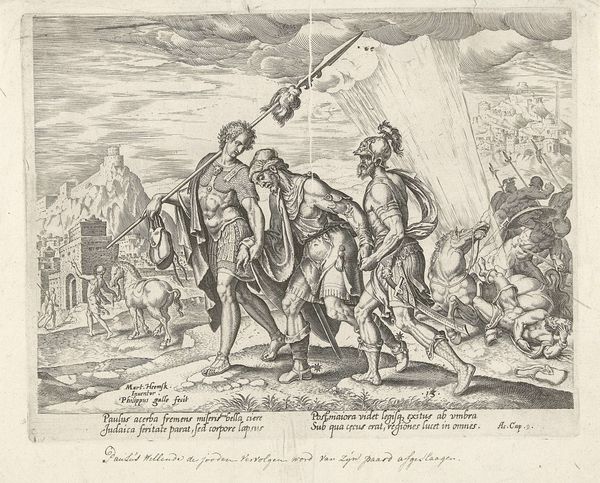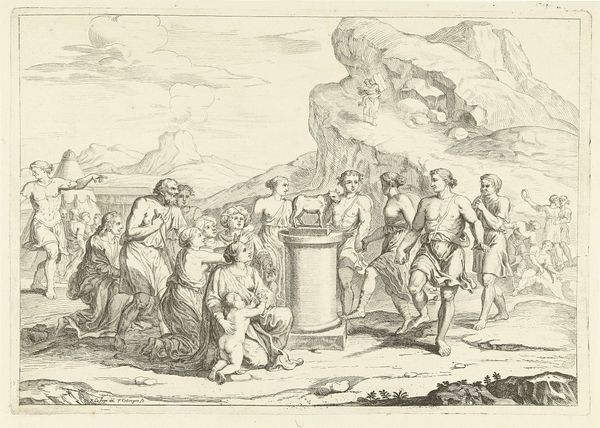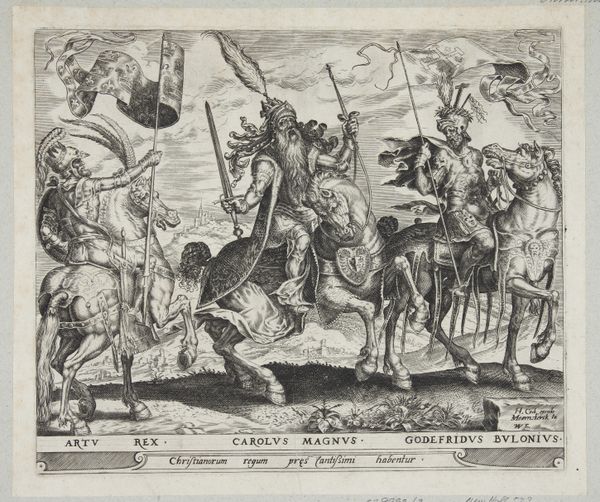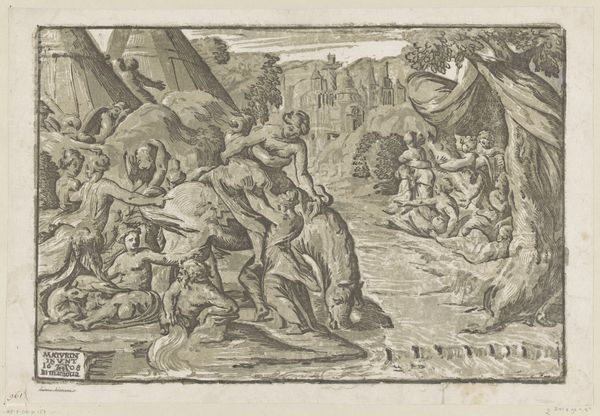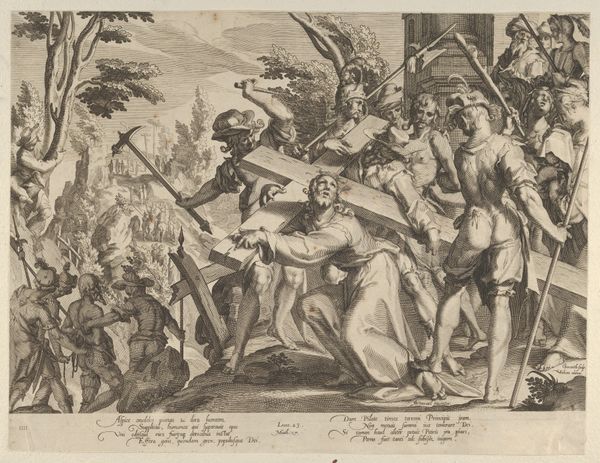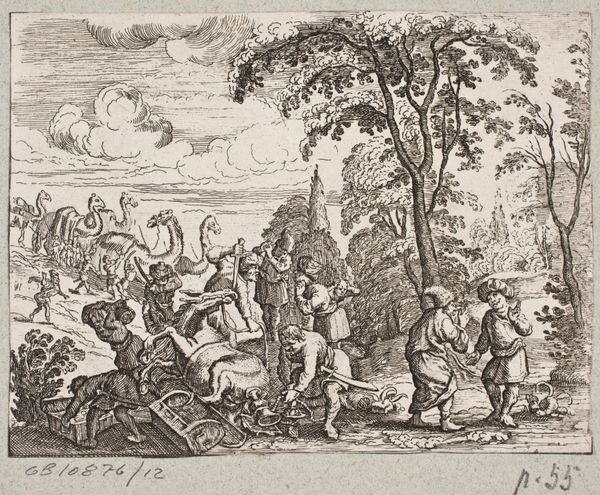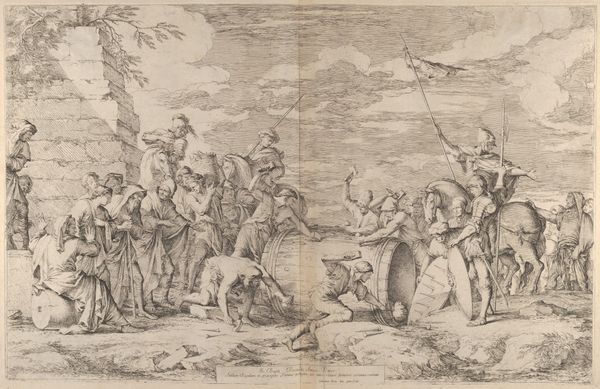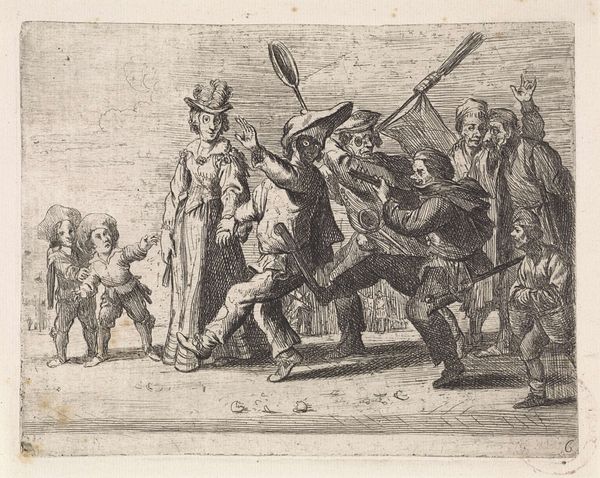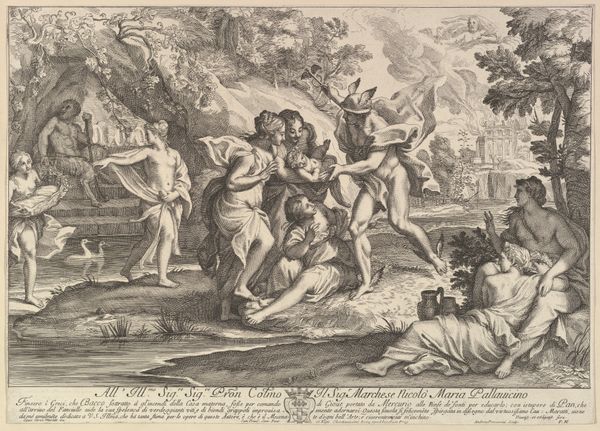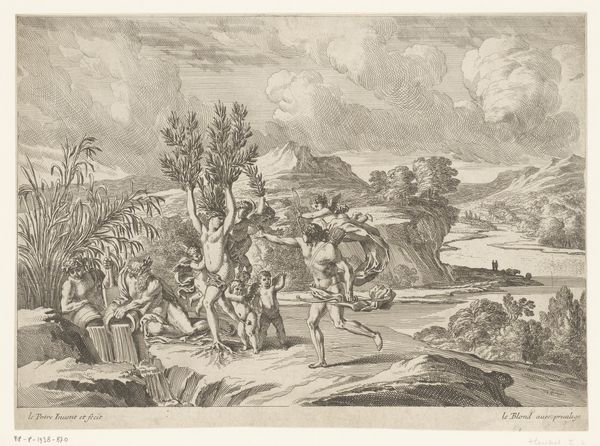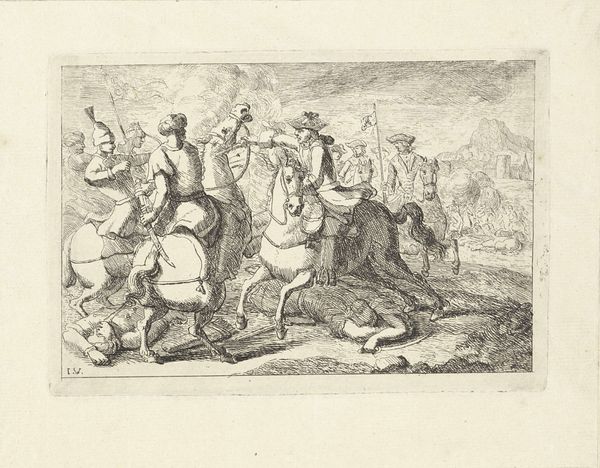
Aeneas fleeing Troy, with a group of six figures leaving the city at left, Aeneas carrying his father Anchises on his back, followed by his wife Creusa and his son Ascanius, two servants at far left 1728
0:00
0:00
drawing, print, engraving
#
drawing
#
allegory
#
baroque
#
ship
# print
#
history-painting
#
engraving
Dimensions: Sheet (Trimmed): 6 7/16 × 8 11/16 in. (16.4 × 22 cm)
Copyright: Public Domain
Curator: Ah, yes. Here we have Anton Joseph von Prenner’s engraving from 1728, “Aeneas fleeing Troy.” A story of epic proportions, literally rendered here in fine lines and cross-hatching. Editor: Immediately, I'm struck by this frantic energy, even in the stillness of the print. It's all movement and urgency—everyone’s desperately trying to escape something horrible. The composition emphasizes this with the figures clustered on the left, contrasted by that vast open landscape in the distance. Curator: Indeed, Prenner captures a pivotal scene from Virgil’s Aeneid, Aeneas carrying his father, Anchises, from the burning city, while leading his family to safety. It's steeped in history-painting conventions and, of course, it functions as an allegory of duty, piety, and the burden of legacy. Editor: You can feel the weight, can't you? Not just the literal weight of Anchises on Aeneas's back, but the burden of history, family, and destiny pressing down on him. Look at the musculature in his legs, his straining neck…it's all exquisitely rendered in such detail. I’m moved. Curator: And consider the Baroque aesthetic – that dynamic composition, the dramatic lighting implied through the varying depths of the engraving, even the heightened emotional expressions – it all underscores the magnitude of the event and the inner turmoil of its characters. Note the details: even the tiny ship in the distance awaiting their escape becomes a beacon of hope. Editor: Absolutely. The way he uses line— the density near the collapsing building, lightening towards the implied sea… Prenner brilliantly uses formal elements to narrate this exodus. I admire how this image, composed in blacks and whites, brings this rich and storied narrative to life with palpable feelings and human stakes. Curator: He manages to condense an entire epic poem into a single, evocative scene. It's quite remarkable to consider all those layers—mythological, historical, emotional—woven together. Editor: Looking closer has illuminated all that suffering and resilience so deftly held in place. The lines and the figures—once just elements—now pulsate. Thanks for showing me this gem!
Comments
No comments
Be the first to comment and join the conversation on the ultimate creative platform.
